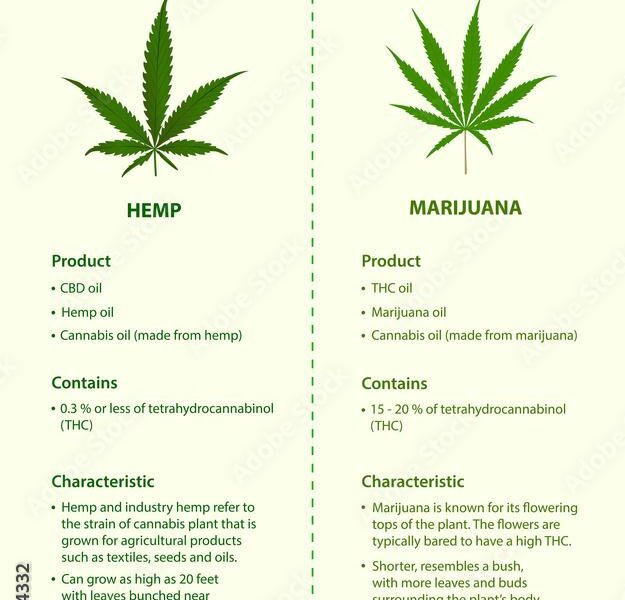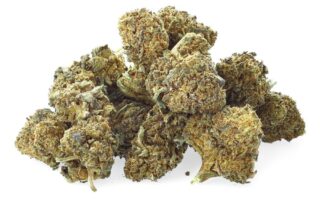As the landscape of natural and synthetic substances continues to evolve, the quest for alternatives to marijuana has captured the attention of both researchers and recreational users alike. With the growing interest in cannabis-related compounds, a host of substances have emerged that share similarities with marijuana, offering varied experiences, potential therapeutic benefits, and unique challenges. From hemp-derived cannabinoids to novel psychotropic agents, these alternatives present a fascinating mosaic of options that echo the effects and rituals of cannabis use. In this exploration, we will delve into the world of drugs similar to marijuana, examining their origins, mechanisms, and the implications they hold for users navigating the modern landscape of psychoactive substances. Join us as we uncover the nuances of these alternatives and consider how they fit into the broader conversation about wellness, recreation, and the evolving perception of mind-altering drugs.
Table of Contents
- Exploring Alternative Cannabinoids and Their Effects
- Natural Herbs with Therapeutic Properties Comparable to Cannabis
- Understanding the Legal Landscape of Marijuana Alternatives
- Safety and Efficacy: Choosing the Right Non-Cannabis Options
- Q&A
- Final Thoughts
Exploring Alternative Cannabinoids and Their Effects
The world of cannabinoids extends far beyond just THC and CBD, revealing a rich tapestry of alternative compounds, each with its unique profile and potential benefits. Among these, CBG (cannabigerol) is emerging as a promising player, often referred to as the ‘mother cannabinoid’ because it is the precursor from which other cannabinoids are synthesized. Users report that CBG can provide anti-inflammatory effects and aid in reducing anxiety without the psychoactive properties associated with THC. Similarly, CBN (cannabinol), often formed as THC ages, is gaining attention for its potential sedative effects, making it a popular choice for those seeking relief from insomnia.
Furthermore, Delta-8-THC is garnering interest as a milder alternative to the more common Delta-9-THC. With reports of a more clear-headed high, users describe it as offering relaxation without the intense anxiety that some experience with traditional THC. There are also compounds like THCV (tetrahydrocannabivarin), which is noted for its appetite-suppressing qualities, making it an intriguing option for those interested in weight management. Here’s a quick overview of these cannabinoids:
| cannabinoid | Main Effects | Potential Uses |
|---|---|---|
| CBG | Anti-inflammatory, anti-anxiety | Reduced anxiety, pain relief |
| CBN | Sedative | Insomnia treatment |
| Delta-8-THC | Clear-headed high | Relaxation, mild euphoria |
| THCV | Appetite suppression | Weight loss support |
Natural Herbs with Therapeutic Properties Comparable to Cannabis
While cannabis is renowned for its therapeutic benefits, nature offers a diverse array of herbs that exhibit similar healing properties. Kava is often celebrated for its calming effects, known to reduce anxiety and promote relaxation without the psychoactive effects typically associated with marijuana. Another intriguing option is Turmeric, which contains curcumin, a powerful compound that boasts anti-inflammatory and antioxidant attributes, making it beneficial for pain relief and overall wellness. Additionally, herbs like Valerian Root and Passionflower are favored for their natural sedative effects, often used to improve sleep quality and ease stress.
Moreover, some lesser-known herbs are gaining attention for their remarkable health benefits. Rhodiola Rosea, for instance, is an adaptogen that helps the body resist stress and improves mental stamina, while Ashwagandha offers similar adaptogenic qualities with the added benefit of enhancing mood and cognitive function. The following table summarizes these natural alternatives and their key therapeutic properties:
| Herb | Therapeutic Properties |
|---|---|
| Kava | Reduces anxiety and promotes relaxation |
| Turmeric | Anti-inflammatory and antioxidant effects |
| Valerian Root | Improves sleep quality |
| Passionflower | Eases stress and promotes calmness |
| Rhodiola Rosea | Enhances stress resilience and mental performance |
| Ashwagandha | Improves mood and cognitive function |
Understanding the Legal Landscape of Marijuana Alternatives
As more individuals explore alternatives to marijuana, it’s essential to navigate the complex legal landscape surrounding these substances. Various states and countries have adopted differing stances on cannabis derivatives and other similar drugs, leading to a patchwork of regulations. Understanding these laws is crucial for consumers and businesses alike, revealing potential benefits and pitfalls. For example, while CBD, a non-psychoactive compound derived from hemp, is widely accepted in many places, other alternatives such as kratom or kava face stricter scrutiny and potential bans in certain jurisdictions due to concerns about safety and efficacy.
In addition to substance regulation, the implications for use and distribution of marijuana alternatives can vary significantly based on locality. Below is a simple overview of several notable substances related to this discussion:
| Substance | Legality | Primary Use |
|---|---|---|
| CBD | Legal in many areas | Health and wellness |
| Kratom | Legal in some, banned in others | Pain relief and energy |
| Kava | Legal, but regulated | Relaxation and anxiety relief |
| Delta-8 THC | Varies greatly by state | Similar effects to cannabis |
As consumers look to incorporate these alternatives into their routines, remaining informed about both the effectiveness and legal status of these substances is imperative. Whether for their psychoactive effects or for therapeutic uses, careful consideration ensures users can safely and legally explore options that suit their needs.
Safety and Efficacy: Choosing the Right Non-Cannabis Options
When exploring alternatives to marijuana, it’s essential to consider both safety and efficacy. Many consumers are motivated by the desire to alleviate symptoms like pain, anxiety, or insomnia without experiencing the psychoactive effects of THC. Several non-cannabis options have emerged, drawing interest for their potential therapeutic benefits. Some of the most sought-after alternatives include:
- Kava: A herbal remedy traditionally used for relaxation and reducing anxiety.
- Kraken: A plant from Southeast Asia known for its potential to relieve pain and enhance mood.
- CBD Oil: Derived from hemp, it is often used for its promising effects on inflammation and anxiety.
- Valerian Root: Commonly utilized as a sleep aid due to its sedative properties.
In assessing these alternatives, one must weigh their potential side effects against their benefits. For example, while Kava has been praised for its calming effects, excessive use can lead to liver damage. On the other hand, CBD oil shows great promise in tackling anxiety and inflammation with a generally favorable safety profile. To assist in making informed decisions, the following table summarizes some key characteristics of these options:
| Option | Primary Use | Safety Concerns |
|---|---|---|
| Kava | Anxiety Relief | Liver toxicity with excessive use |
| Kraken | Pain Relief, Mood Enhancement | Possible addiction, nausea |
| CBD Oil | Anxiety, Inflammation | Generally well-tolerated, mild side effects |
| Valerian Root | Sleep Aid | Daytime drowsiness, digestive upset |
Q&A
Q&A: Exploring Alternative Substances Similar to Marijuana
Q1: What are some natural alternatives to marijuana that provide similar effects?
A: Several natural substances have been noted for their psychoactive properties that can provide effects similar to those of marijuana. Some of the most commonly discussed alternatives include herbs like kanna (Sceletium tortuosum) and wild dagga (Leonotis leonurus), both known for their mood-enhancing qualities. Additionally, various strains of hemp contain CBD, which may offer relaxation without the high commonly associated with THC.
Q2: Are there synthetic drugs that mimic the effects of marijuana?
A: Yes, there are synthetic cannabinoids, often marketed as “Spice” or “K2.” These lab-created compounds can attach to the same receptors in the brain as THC. However, this group can lead to unpredictable effects and health risks due to variations in composition and strength. Users should exercise caution as these substances can result in a range of adverse reactions.
Q3: Can these alternative substances be used for medicinal purposes?
A: Yes, some alternatives, particularly those containing CBD or other cannabinoids, are being researched for their potential therapeutic benefits. For example, CBD has been studied for its anti-inflammatory, anti-anxiety, and seizure-suppressant effects. However, it’s crucial to consult with a healthcare professional before using any substance for medicinal purposes.
Q4: How do the effects of these alternatives compare to marijuana?
A: While some alternatives can produce similar feelings of relaxation and euphoria, the effects can vary widely among different substances. For example, kanna may enhance mood and induce mild relaxation, while wild dagga may cause a light, mellow high. Synthetic cannabinoids usually have stronger psychoactive effects, but they also come with a higher risk of negative side effects.
Q5: Are there legal considerations when using substances similar to marijuana?
A: Legal status varies significantly by region and substance. While many herbal alternatives are legal in various countries, synthetic cannabinoids have been banned or regulated in numerous places due to their unpredictable nature and potential for abuse. Always check local regulations before purchasing or using any alternative substances.
Q6: What should someone consider before trying an alternative to marijuana?
A: Individuals should consider their health, any underlying medical conditions, and potential interactions with other medications. Additionally, understanding the specific effects, benefits, and risks associated with each alternative is essential, as is sourcing from reputable, trustworthy suppliers. Personal tolerance and legal ramifications should also play a significant role in the decision to try these substances.
Q7: Is it possible to experience withdrawal symptoms from alternative substances?
A: Withdrawal symptoms can occur with certain substances, especially synthetic cannabinoids. Some individuals have reported experiencing anxiety, irritability, or cravings. However, natural herbs like kanna or wild dagga are generally considered to have a milder impact and lower risk of dependency compared to more potent substances like THC.
Q8: Where can readers find more information about these alternative drugs?
A: Individuals looking for more information should explore reputable sources including scientific journals, medical websites, and guides from addiction resources. Consulting with healthcare professionals familiar with cannabinoid research can also provide personalized guidance and support.
Final Thoughts:
While alternatives to marijuana can offer some similar benefits, it’s essential to approach them thoughtfully and responsibly. Every substance interacts with our bodies differently, and knowledge is crucial for ensuring a safe experience.
Final Thoughts
As we close the chapter on our exploration of substances reminiscent of marijuana, it’s essential to take a moment to reflect on the broader implications of this intriguing landscape. From the rising popularity of hemp-derived alternatives to the Quest for legal and safer options that promote relaxation and well-being, the world of cannabinoids continues to evolve.
Whether you’re a curious explorer, a medicinal user seeking accessible options, or simply someone intrigued by the science behind these compounds, understanding the nuances of these alternatives is key. As with any substance, it’s vital to approach them with respect and caution, keeping in mind individual needs, legal guidelines, and health considerations.
As we navigate this intricate terrain, let us remain open-minded and informed, fostering respectful conversations about the evolving nature of these substances. After all, knowledge is the most potent tool we possess in our quest for wellness, understanding, and balance.



